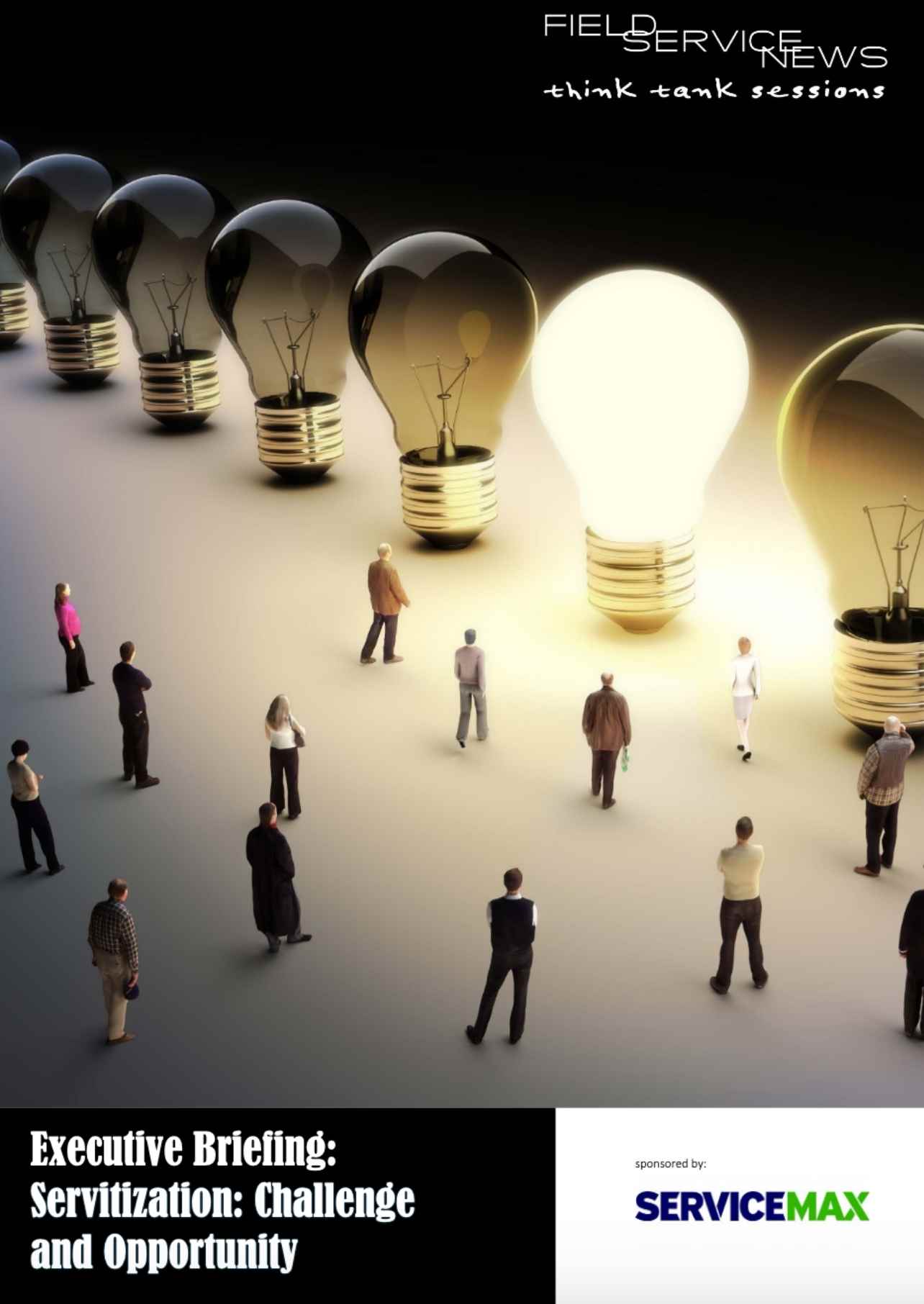Reframing the Service/Product Conversation
The dichotomy between sales and service is changing beyond recognition. However, we must remember that in a servitized world sales and service are two parts of a much more cohesive whole…
One of the most significant shifts within the field service industry within decades has been the impact of servitization. Service has stepped out of the shadows away. Service has broken from its traditional role as the ‘necessary evil’ required to get the product deal over the line. Service is now an equal partner in a genuine symbiotic relationship alongside product that benefits both provider and customer alike.
The question is how we, as service leaders, bring our colleagues from sales, R&D, marketing and beyond along on the journey with us.
“In my previous company I worked for Bosch where we were selling security and safety systems”, commented Coen Jeukens, VP Global Customer Transformation, ServiceMax
“When we’re selling on a CAPEX basis to our customers, the typical margin for product sales was somewhere between 5 and 10% because we were in a more commoditized business. But we saw the margin contribution on an aftersales revenue was much more significant. So from an internal drive, it was very logical to say ‘what if we can transfer some of the revenue from the sales domain to the service domain because then we have a higher margin contribution.
“One of the key questions from my perspective is just how much is margin contribution thinking essential in making the transition from traditional reactive to a more proactive, advanced services approach?”
– Coen Jeukens, VP Global Customer Transformation, ServiceMax
“However, if you have two departments, you have organizational issues. So one of the key questions from my perspective is just how much is margin contribution thinking essential in making the transition from traditional reactive to a more proactive, advanced services approach?”
Jeukens point around margin contribution is a hugely important one. Perhaps the most fundamental aspect of successful implementation of advanced service strategies is the inclusion of fresh thinking in terms of where the value of your service offering both internally and externally.
“We talk about bundling our offering,” explained Christo Roux, Director, Field & Workshop Services, Outotec.
“So in terms of servitization it has come down to long term service agreements which may include consignment stock, service level agreements, partial or full presence on-site, 24-hour call services and so forth.
“For us, that is as far as we are going in terms of servitization. But outcome-based services in our world is definitely a discussion being held, but the general consensus would suggest that it might have to be something that is separate to this initial approach.
“We will still definitely go with our long term service agreements. Through these, we have an expected revenue base and also a better resource loading capability…”
– Christo Roux, Director, Field & Workshop Services, Outotec.
“I don’t today see it as something we could integrate into our field service offering particularly easily – so we will still definitely go with our long term service agreements. Through these, we have an expected revenue base and also a better resource loading capability, and then we can supplement this with all the spot resources we can do as well.”
Again, while the core thinking remains the same, the servitization cannot be a one size fits all approach. That can be mirrored across different industry verticals.
“I think there are two approaches for consideration here” commented Jan van Veen, Founder MoreMomentum.
“If we are looking at this from the perspective of developing and innovating, then it is not really the KPIs that are the problem as yet. If you start using operational KPIs on an innovation team, then something, somewhere will stall.
“I think it is good to have a decision from the executive level on any innovation within a business. However, a decision without a strategy on how we are going to run this innovation simply won’t fly. So while it’s nice to have a business strategy, often what we are missing is an innovation and change strategy.
“In this context, the approach adopted really depends on what type of innovation we are talking of. If it is small incremental steps, then you can expect the running organization to do it as a side task. However, if it is a bigger project, then at some point, we need to organize a dedicated task force.
“We need to identify the new business logic about what our business mode will be. What is our position in the market? What problems are we aiming to solve for our clients?”
– Jan van Veen, Founder, moreMomentum
“If we are talking about something that requires new thinking about the business model, and when we are talking about outcome-based services that is exactly what we are doing, then the latter approach is more effective.
“We need to identify the new business logic about what our business mode will be. What is our position in the market? What problems are we aiming to solve for our clients?
“At this point, we can establish an optimum way of building out these new ways of thinking within the business and begin to establish satellite teams. Such teams should be entrepreneurial leaning teams who are tasked with outlining the solution and taking that to the market by identifying the early adopters – who are not necessarily the current key clients of the running organization.”
This is a point echoed by Jeukens.
“I think with a lot of organisations who have successful servitization models you are either a thought leader, and you are pre-empting disruption, you have a niche market, and it is suddenly a hit, or you have an organisation who is really listening to the voice of the customer,” he comments.
“One of the most important questions you can ask a customer in this final scenario if around their end goals. For example, you ask the customer ‘you have just bought a piece of equipment for X million, but what was the purpose of that acquisition – do you want to own the equipment or do you want to use the equipment?
“If we focus on the use of the equipment as provider the question we must then address internally is what additional services can we now use in the domain?”
“I think there are two approaches for consideration here,” Van Veen suggests.
“If we are looking at this from the perspective of developing and innovating, then it is not really the KPIs that are the problem as yet. If you start using operational KPIs on an innovation team, then something, somewhere will stall.
“I think it is good to have a decision from the executive level on any innovation within a business. However, a decision without a strategy on how we are going to run this innovation simply won’t fly. So while it’s nice to have a business strategy, often what we are missing is an innovation and change strategy,” he adds.
“In this context,” Van Veen continues, “the approach adopted really depends on what type of innovation we are talking of. If it is small incremental steps, then you can expect the running organisation to do it as a side task. However, if it is a bigger project, then at some point, we need to organise a dedicated task force.
“If we are talking about something that requires new thinking about the business model, and when we are talking about outcome-based services that is exactly what we are doing, then the latter approach is more effective.
“Even if the official strategy is to prioritise aftermarket and at the top level that is the story, you also need to see what is happening two layers lower in the organisation…”
– Maarten Wijnheijmer, Global Aftermarket Sales Director, Howden
“We need to identify the new business logic about what our business mode will be. What is our position in the market? What problems are we aiming to solve for our clients?
“At this point we can establish an optimum way of building out these new ways of thinking within the business and begin to establish satellite teams. Such teams should be entrepreneurial leaning teams who are tasked with outlining the solution and taking that to the market by identifying the early adopters – who are not necessarily the current key clients of the running organisation.”
Van Veen makes an excellent point, in that amongst many organisations who have succeeded to establish a servitized offering, they have done so with a team that had the space to innovate, experiment and potentially fail. However, as the concept evolves, there is a critical need for everyone within the organisation to be on the same page.
As Maarten Wijnheijmer, Global Aftermarket Sales Director, Howden comments “Even if the official strategy is to prioritise aftermarket and at the top level that is the story, you also need to see what is happening two layers lower in the organisation, which is where the day to day decisions are made. Strategy doesn’t land on its own and it is not always understood by the top what is needed to implement their vision to generate more aftermarket business.”
All members of the Field Service Think Tanks are speaking from their own personal opinions which are not necessarily reflective of the organisations they work for.


Data usage note: By accessing this content you consent to the contact details submitted when you registered as a subscriber to fieldservicenews.com to be shared with the listed sponsor of this premium content Service Max who may contact you for legitimate business reasons to discuss the content of this briefing report.


